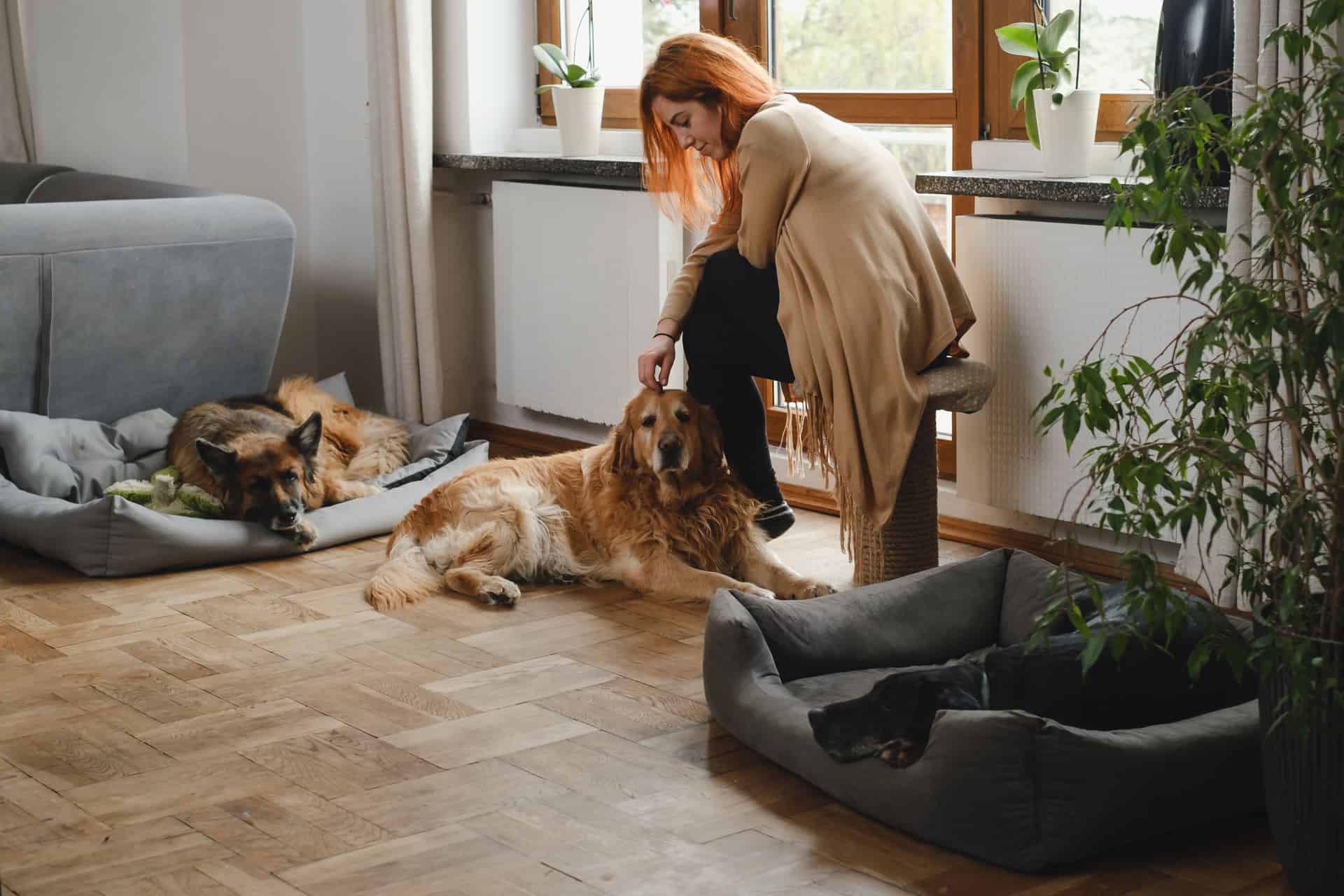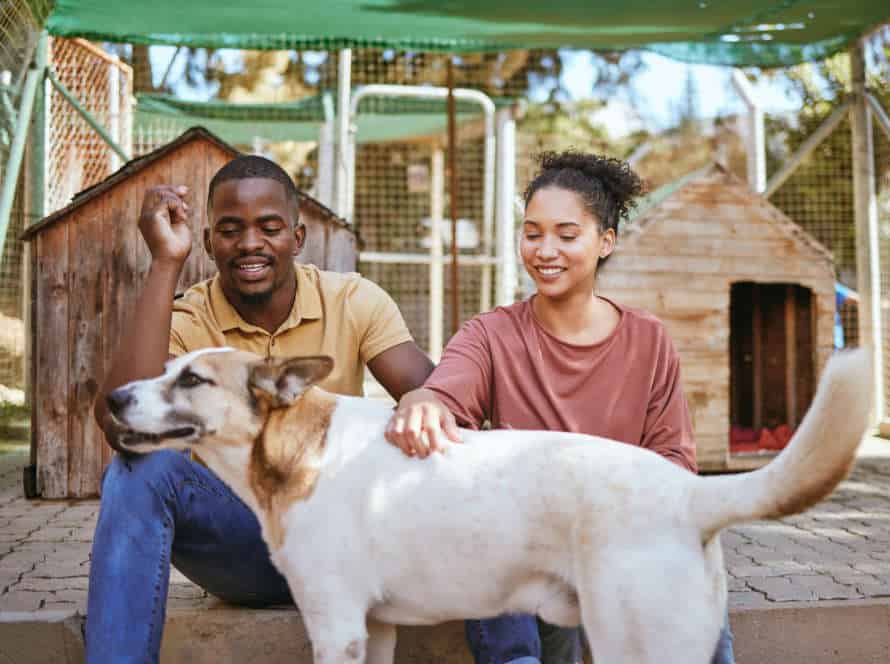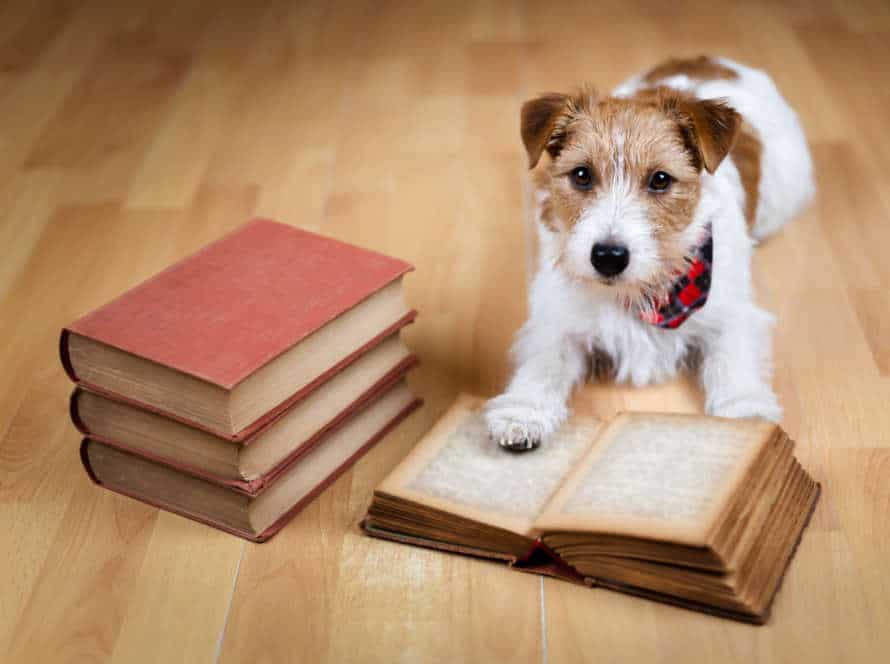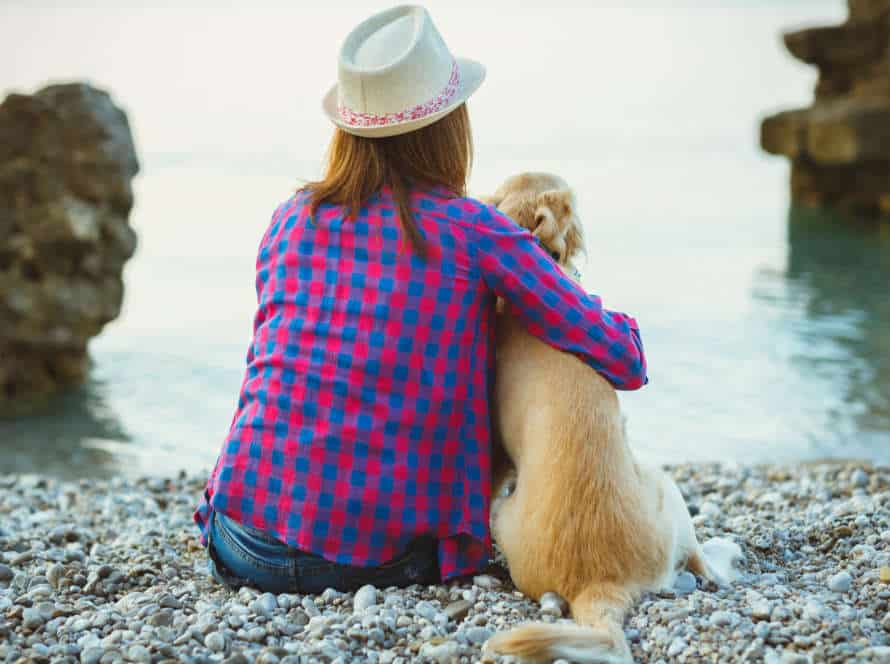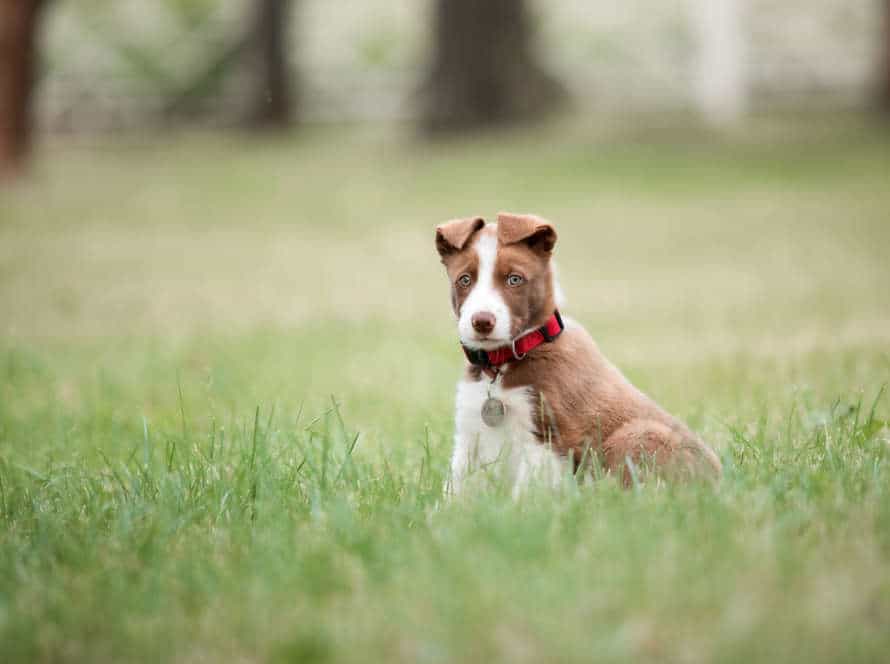Preventing Common Issues When Introducing a New Dog
Introducing a pooch to your home can be both fun and tricky. To make sure a smooth and low-stress transition for both your new pup and existing pets, it is essential to take preventive measures. Here are some tips:
- Introduce the pups in a place neither of them knows to avoid territorial aggression.
- Watch the first few interactions to stop fighting and set dominance if needed.
- Give each dog its own food and water bowls and bed area.
- Give each pup its own toys to avoid arguments about possessions.
- Be patient and let the dogs get to know each other slowly.
Pro Tip: Talk to a professional dog trainer or vet to prevent common issues and ensure a safe and healthy transition for your pets.
Preparing for a New Dog
A new doggo in your home? What an exciting time! Yet, it may bring some stress. Preparing correctly can reduce this stress. Here are a few tips to make the transition seamless. Plus, you can avoid common issues. Woof!
Evaluate if adding a dog is right for you
Considering a pup to join your family is a serious undertaking. Before making the commitment, decide if a pup is the right fit for you and your lifestyle. Here are some things to think about:
- Your routine: Pups require exercise, socialization, and affection daily. Do you have the time to meet their needs?
- Your home: A pup needs a safe and comfy place with room to roam. Is your living space pup-friendly?
- Your budget: Food, supplies, vet visits, and training cost money. Do you have the funds to cover these needs?
- Your family: The pup must get along with everyone in the house and any other pets. Does the pup fit in with your family dynamics?
Taking the time to assess whether you’re ready for a pup can help avoid common issues when bringing a pet home.
Pro tip: Consider fostering a pup before adoption to see if having one is right for you.
Research dog breeds to find the best fit for your lifestyle
Bringing a pup into your home? Research is essential! Each breed has its own characteristics, energy, and temperament. To avoid issues later, choose wisely. Here are some factors to consider:
- Energy Level: High or low?
- Size: Do you have enough room for a large breed?
- Temperament: Good with kids and other pets? Protective or social?
Research thoroughly and talk to experienced dog owners, breeders, or trainers to find the right fit. Plus, consider adopting from a shelter or rescue group. Many pooches need loving homes!
Puppy-proof your home before bringing a new dog home
Puppy-proof your home before introducing a new dog. Here are some tips:
- Tie up loose wires, cords and cables.
- Put hazardous materials – e.g. cleaning supplies, chemicals and medications – in a secure place.
- Keep trash cans out of reach.
- Cover electrical outlets.
- Keep breakable objects away.
- Buy toys and chew items to keep the pup busy.
- Put the pup in a crate or playpen when unsupervised.
Taking these steps will keep your pup safe and prevent issues. Pro Tip: Supervise for a few weeks as they adjust to the new environment.
Introducing Your New Dog to Your Home
A new pup in the house? Wow! But it can be daunting. So, get ready! These tips are sure to help you transition your new pup into the family. Take heed of the best practices and safety measures when welcoming your new furry friend.
Introduce your new dog to each family member individually
Introducing a pup to your house can be tricky for both the pup and people who already live there. If each person meets the pup alone, it can help stop issues like aggression and anxiety. Here is what to do:
- Put the pup in a room with food, water and toys.
- Let one person at a time enter the room and spend time with the pup. Keep it chill and nice.
- See how the pup acts toward each person. Step back if the pup looks scared or mad.
- Do the intro process over a few days or weeks.
- Take it slow when introducing the pup to other parts of your house and other pets.
Pro Tip: Be consistent when introducing the pup. Making a calm, good, and steady setting can help your pup adjust and be content in the new place.
Supervise all interactions between your new dog and your children
Introducing a new pup to your house? It can be an exciting experience for your family! It is important to be nearby when your new pet meets your children. Here are a few tips to make the process positive:
- Give your dog a safe spot: Give your pup a place to go when it feels anxious or overwhelmed. Teach your children to respect this space.
- Create rules: Teach your children how to interact with the pup safely. Things like tugging at ears, prodding and poking should be avoided.
- Short visits: Slowly let your pup get used to your children’s presence with short, supervised visits.
- Reward good behavior: Praise and reward your pup for good behavior around your kids (like staying calm).
Remember, patience is essential. With the right training, socialization and supervision, your pup will become a beloved member of your family.
Introduce your new dog to resident pets slowly and cautiously
Introducing your new pup to existing animals in the home must be done slowly and cautiously – this will help avoid issues and make a positive space for all pets. Here are some guidelines to make sure the introduction is a success:
- Give each pet their own area – put your new dog and other pets in different rooms with food, water and toys.
- Utilize a neutral spot – like a park – to let both animals explore and get to know one another.
- Keep your pup leashed – have controlled interactions between pets while leashing the dog.
- Supervise at all times – never leave them unattended.
- Provide individual attention to each pet – give them all love and appreciation.
By following these tips, you’ll ensure a smooth introduction and make sure all pets feel at ease in their new home.
Addressing Behavior Issues After Introduction
Introducing a pup to a home? Let’s prevent issues! Tackle potential problems early. This will enable a good foundation and a healthy relationship with other pets. Here are the most common issues that arise during the introduction process and how to deal with them:
Recognize signs of aggression and how to respond
Dogs can be aggressive for varied reasons, like fear, anxiousness, territory behavior and dominance. As a responsible dog owner, you must identify the signs of aggression and react suitably to stop any harmful situations. Some common signs of aggression are growling, barking, snarling, showing teeth and attacking.
If you notice any of these signs, you should do the following:
- Keep a safe distance from the dog, don’t approach it.
- Avoid staring at the dog.
- Speak in a gentle and quiet voice.
- Move back slowly, without turning your back.
- If the dog attacks, try to protect yourself with a coat, bag or any available object.
Training and socialization can aid preventing aggression in dogs. Talk to an expert dog trainer or behaviorist to address any aggressive behavior in your pup.
Address separation anxiety to prevent destructive behavior
Separation anxiety is a common cause of destruction in dogs. It’s important to tackle it quick to stop future problems and make your pooch content and healthy.
Here are some tips:
- Gradual exposure: Start by leaving for short periods and increase the time you’re away slowly.
- Crate training: Give your dog a safe, snug space to chill in while you’re gone.
- Calming techniques: Teach deep breathing exercises and reward them for good behavior.
- Professional help: If the anxiety is too much, get help from a doggy expert or vet.
By addressing separation anxiety early, you can stop destruction and give your furry friend a happy, healthy life.
Manage territory aggression and resource guarding behaviors
Territorial aggression and resource guarding can be common when a new pup joins the household. Here are 4 ways to manage and prevent these behaviors:
- Separate resources during feeding times and when they have prized toys or treats.
- Positively reward both dogs with treats and praise when they act kindly towards each other.
- Give each dog special attention to make them feel loved and secure.
- In extreme cases, seek assistance from a professional dog trainer.
By using these techniques, you can create a peaceful and happy home for both your new and existing dogs.
Positive Training Techniques for a New Dog
It’s so thrilling to bring home a new pup! It can give your family lots of happiness. It’s vital to spend time training the doggo, so they know the rules of your house. This prevents any common problems. Positive training is the best and least stressful way to teach them. Let’s dive into the details of how to do it.
Use positive reinforcement to encourage desired behaviors
Positive reinforcement is a technique used to train dogs. Rather than punishing, rewards like treats and praise are given for good behavior. Here are some tips:
- Start with basic commands, like “sit” or “stay”, then give the reward.
- Make sure to reward immediately after the desired behavior.
- Be consistent with rewards.
- Every time your dog does something good, give a reward.
- If your dog misbehaves, redirect their behavior instead of punishing them.
Positive reinforcement helps to create a strong bond between you and your dog. It leads to a happier and healthier relationship.
Implement clicker training to reinforce good behavior
Clicker training is a great way to teach your pup good habits. Here’s how to do it:
Steps:
- Find a calm place to train them.
- Let your dog understand that the clicker means positive reinforcement, like treats or compliments.
- Use the clicker to recognize good behavior like sitting, staying, and coming when called.
- Don’t use the clicker for bad behavior. Instead, direct their attention to something good.
- Be consistent and repeat the behaviors so your dog knows what to do.
Over time, clicker training will create a strong bond between you and your pet, while teaching them desirable behaviors.
Engage in daily obedience training to establish a healthy relationship with your new dog.
Obedience training is key to a successful relationship with a new pup. Things like proper behavior, etiquette, and socialization are learned through it. Positive training works best. So, here are some tips:
- Start with simple commands – sit, stay, come, and down.
- Reward good behaviour with treats, praise, and playtime.
- Keep it short and enjoyable.
- Be consistent with commands and rewards.
- As your pet progresses, make the exercises harder.
- No negativity – no punishment or fear.
- Patience and perseverance is important!
Frequently Asked Questions
Q: What are some common issues that can arise when introducing a new dog to a household?
A: Some common issues include aggression towards other dogs or people, destructive behavior, and difficulty adjusting to a new environment.
Q: How can I prevent these issues from occurring?
A: Properly introducing the new dog to your household and establishing a routine can help prevent these issues. Providing plenty of exercise, socialization, and positive reinforcement training can also be beneficial.
Q: How should I introduce the new dog to my current pets?
A: It is best to introduce them gradually, in a neutral location, with both dogs on leashes. Let them get to know each other slowly and supervise all interactions until you are sure they can get along safely.
Q: Should I expect some initial behavioral issues when introducing a new dog?
A: Yes, it is common for dogs to experience some anxiety and confusion when introduced to a new environment. Consistency, patience, and positive reinforcement can help alleviate these issues over time.
Q: Are there any particular breeds or personalities that may have more difficulty adjusting?
A: Any breed or personality type can have difficulty adjusting to a new environment. However, some breeds may require more socialization and exercise than others.

